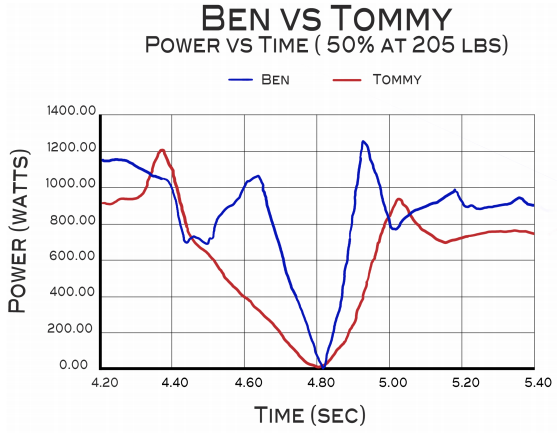We are always looking for ways to improve our programming. Recently, using our professional skiers and lab rats, we have been experimenting with a few new concepts. Two of these will be making their way into the next Operator Cycle.
- The first is programming for land-based units (“Green”) and water-based units (“Blue”) during endurance and work capacity sessions.
- The second is the implementation of “Triphasic Training” into our strength sessions.
Here is a little more information on each:
Blue and Green Training:
We have been floating this idea around for a while and are finally ready to give it a shot. Blue and Green sessions will be programmed on Mondays and Wednesdays during our next cycle. Operators will have the choice of completing either program based on their unit-specific needs or personal preferences.
Green training will be similar to our traditional endurance and work capacity sessions. They will remain focused on movement-over-ground events – intervals and long distance running and rucking.
Blue training will consist of pool-based sessions. They are designed for athletes assigned to water-based units or, simply, for those who want a change of pace in their training. The first cycle is going to be very basic. We are sticking to sidestroke, freestyle and water treading.
To help athletes familiarize themselves with our blue programming we have created three simple videos for this first cycle:
- Treading water Video
- Combat Sidestroke Video
- Freestyle Swim Progression Video (5 drill series)
Triphasic Training:
Triphasic training was developed at the University of Minnesota by strength coach Cal Dietz. Dietz and a colleague, Ben Peterson, published their theory in the book Triphasic Training in 2012. Since then the theory has gained a fairly large following in the strength and conditioning world.
Dietz and Peterson’s theory is based on the idea that all dynamic movements are actually a combination of three actions: (1) Eccentric contractions, (2) Isometric contractions and (3) Concentric contractions.
According to the theory, athletic events rely in quick, violent changes of direction. So, the most successful athletes aren’t necessarily the strongest, but, according to Dietz, the ones who can eccentrically absorb force, isometrically load and concentrically apply force in a new direction.
To illustrate his theory, Dietz uses the example of two high-level throwers he worked with during his early years coaching. Both throwers were nearly identical in all measures of normal athletic ability – same max lifts, same size, similar form, etc. However, one athlete was an elite, olympic-caliber performer and the other, a mediocre college athlete.
It wasn’t until coach Dietz saw the graph below that he realized what separated the two athlete’s performance. It was their ability to absorb and apply force quickly during the three phases.
 Diagram from Triphasic Training (2012)
Diagram from Triphasic Training (2012)
In the graph above, the narrower the “V” the quicker the athlete is able to transition between eccentric, isometric and concentric forces. Based on this, it should come as no surprise that Ben is the elite, olympic thrower and Tommy is less advanced performer.
Still looking at the graph above, the large drop in power is eccentric phase (or deceleration) of the lift (from approximately 4.40/4.60sec to 4.80 sec). The turn-around point is the isometric phase (bottom)and the incline (or acceleration) is the concentric phase (4.80 to 5.0 sec). As you can see, Ben is quicker in all aspects of the movement and, based on the Triphasic philosphy, this is responsible for his superior athletic performance (even with all other aspects are equal).
Dietz goes on to explain how he believes this difference is the key to improving performance in every sport.
 Diagrams from Triphasic Training (2012)
Diagrams from Triphasic Training (2012)
Obviously tactical athletes aren’t dodging defenders like the Adrian Peterson (see graph above), but, we believe, there are similar athletic demands which are fundamental to both types of performance. To paraphrase one of the best quotes in the book:
…you must remember that [tactical] athletes aren’t powerlifters. They must be strong but only to the extent that can benefit them in their [professions].
So, for us, this next Operator cycle is a chance to re-examine our traditional approach to strength training and train “athleticism” (according to Dietz and Peterson) in the weight room. For our athletes this will mean two week blocks training each phase: Week 1-2 = Eccentric, Week 3-4 = Isometric and Week 5-6 Concentric.
References
Dietz, Cal, Peterson, Ben (2012). Triphasic Training: A systematic approach to elite speed and explosive strength performance. Bye Dietz Sport Enterprise. Hudson, WI.
